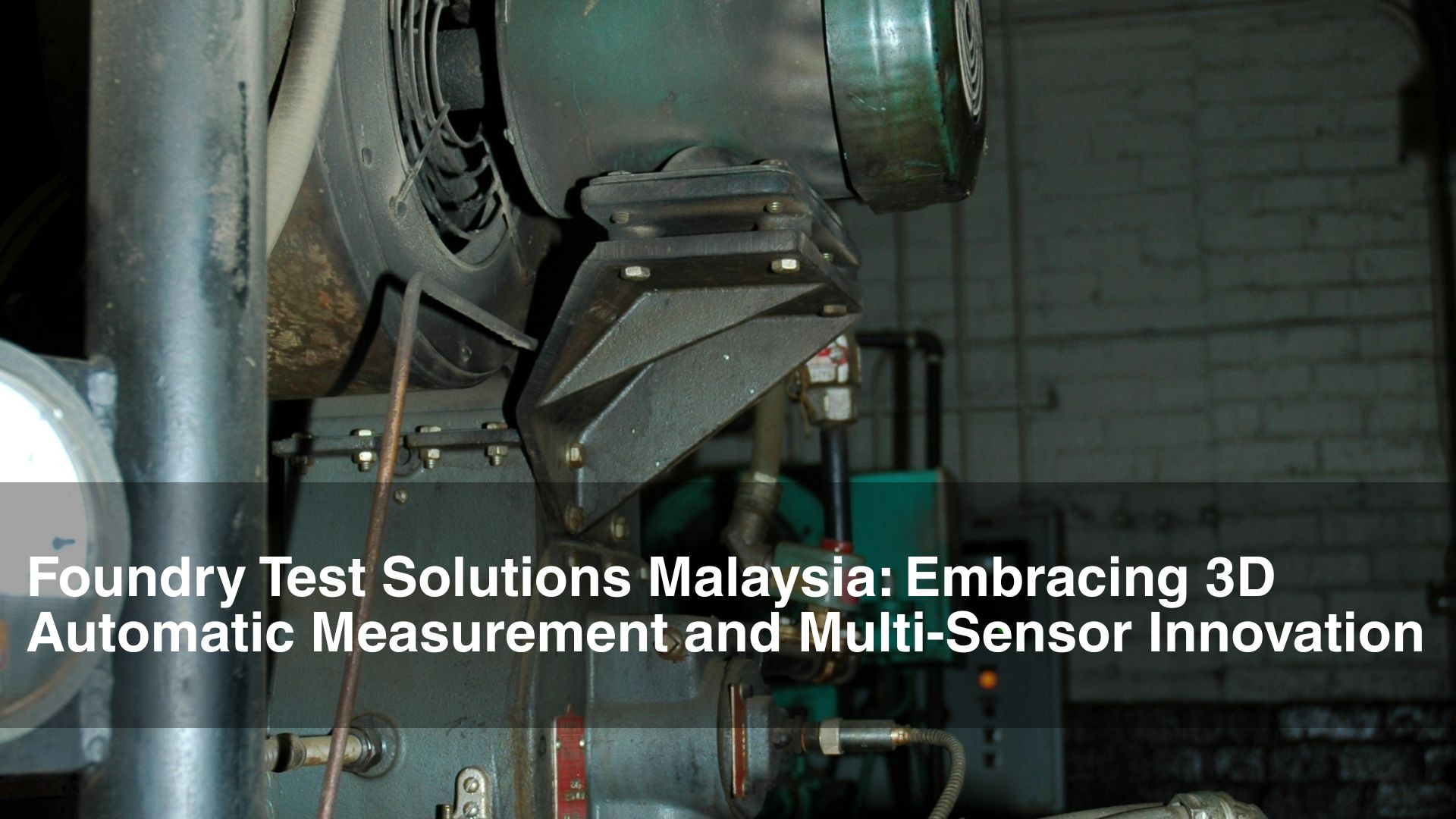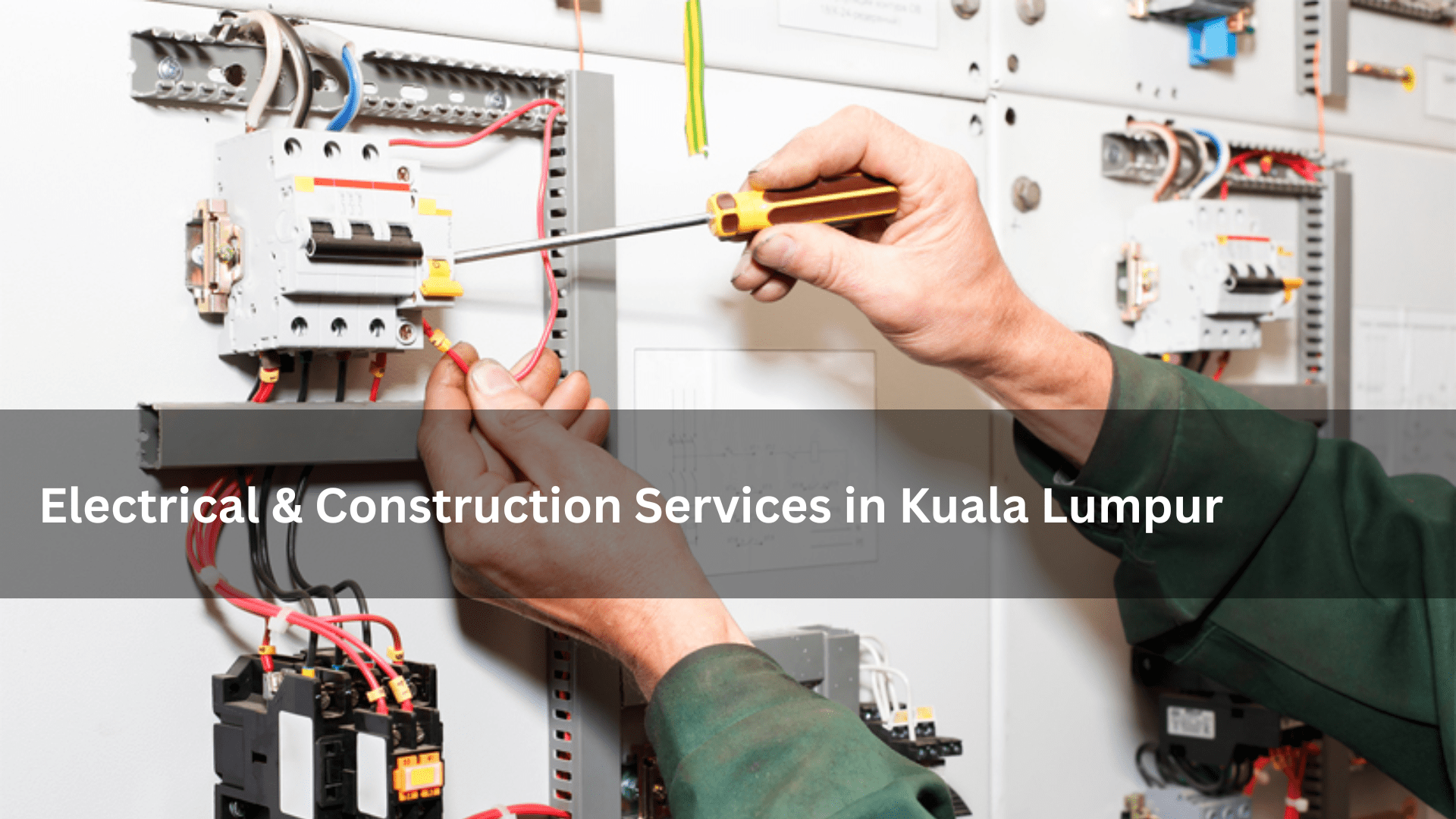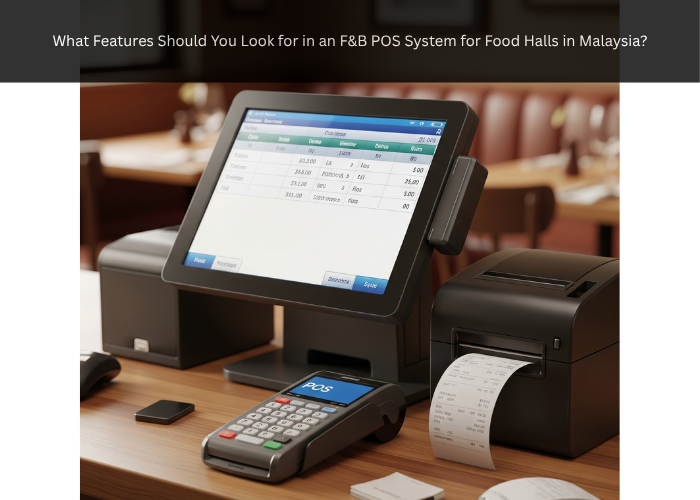Introduction to Foundry Test Solutions Malaysia
Foundry test solutions Malaysia are integral components within the manufacturing industry, particularly in Malaysia, where precision and efficiency in production processes are paramount. These solutions encompass a variety of testing methodologies and technologies designed to ensure that foundry products meet established quality standards. Through diligent testing, manufacturers can uphold the integrity and durability of components and materials, minimizing waste and improving overall product reliability.
In Malaysia, foundry test solutions are evolving in response to the growing demands for advanced manufacturing processes. As the industry expands, there is a recognizable shift towards embracing innovative technologies that encompass 3D automatic measurement and multi-sensor capabilities. This evolution is not merely beneficial but essential, as it facilitates the production of intricate designs and complex geometries that were traditionally challenging to manufacture.
The significance of adopting foundry test solutions in Malaysia lies in their ability to enhance productivity while ensuring compliance with international quality standards. By implementing state-of-the-art testing technologies, Malaysian manufacturers are better positioned to compete in an increasingly globalized market. Furthermore, the use of modern testing solutions not only increases the accuracy of measurements but also reduces manual intervention, thus minimizing human error. This level of precision is crucial for manufacturers aiming to push the boundaries of innovation and stay ahead of their competitors.
Moreover, advanced foundry test solutions such as 3D automatic measurement tools provide significant advantages by automating the inspection process, leading to quicker turnaround times and substantial cost savings. By leveraging such technologies, the Malaysian manufacturing sector is poised to enhance its operational efficiencies further, eventually leading to improved market share and profitability. The coming sections will delve deeper into the specific innovations driving these advancements.
What is 3D Automatic Measurement in Foundry Test Solutions Malaysia?
3D automatic measurement is a cutting-edge technology that plays a vital role in the domain of foundry test solutions Malaysia. It is characterized by the use of advanced measurement systems that capture three-dimensional data of objects with high precision. This technology leverages various sensors and imaging techniques to create detailed digital representations of components, ultimately facilitating accurate dimensional analysis.
The process begins with the deployment of multi-sensor systems, which can encompass laser scanning, structured light, or optical imaging. These sensors work concurrently to collect comprehensive data from multiple angles, ensuring that no detail is overlooked. The integration of 3D measurement systems into foundry operations allows manufacturers to streamline their quality control processes, leading to improved production outcomes. With the elimination of manual measurement errors, the reliability of foundry test solutions Malaysia is significantly enhanced.
Moreover, the applications of this technology extend beyond mere dimensional verification. 3D automatic measurement is instrumental in detecting surface defects, assessing geometrical tolerances, and validating designs against specifications. By implementing these measurement solutions, foundries in Malaysia can ensure that their products not only meet industrial standards but also exceed customer expectations in terms of quality and performance.
Incorporating 3D automatic measurement into foundry test solutions reflects a commitment to innovation and efficiency. As the industry evolves, these advancements enable manufacturers to remain competitive in a global market that increasingly demands technological integration and precision engineering. Therefore, it is clear that the adoption of such advanced testing solutions is paramount for ensuring the continued success and sustainability of foundries in Malaysia.
The Role of Multi-Sensor Technologies in Foundry Test Solutions Malaysia
In the realm of foundry test solutions Malaysia, the integration of multi-sensor technologies has emerged as a pivotal advancement. These technologies harness various sensors to facilitate automated inspection processes, drastically improving both accuracy and operational efficiency. The diverse range of sensors, including optical, ultrasonic, and electromagnetic, play distinct but complementary roles in ensuring comprehensive material inspection and analysis.
Optical sensors utilize light to detect surface imperfections and measure geometric dimensions with precision. They capture high-resolution images that allow for real-time analysis, facilitating quick decision-making in quality control processes. Ultrasonic sensors are particularly effective in assessing material integrity by sending sound waves through the material, thereby identifying any subsurface flaws that may not be visible externally. This is crucial in foundry operations, where underlying defects can compromise the structural integrity of castings.
Electromagnetic sensors further enhance the inspection capabilities by evaluating the electromagnetic properties of materials. They can quickly assess conductivity, permeability, and other characteristics that are vital for determining the suitability of materials for specific applications. The collaboration of these various sensor types results in a robust framework for foundry test solutions Malaysia, capable of addressing a wide array of testing needs in a seamless manner.
Moreover, the adoption of multi-sensor systems enables enhanced data collection and integration. This leads to a comprehensive database that supports predictive analysis and continuous improvement in manufacturing processes. As foundries strive for higher efficiency and quality assurance, the significance of multi-sensor technologies cannot be understated. The commitment to leveraging such innovations defines the future of foundry operations, where precision and excellence are paramount.
Enhancing Inspection Speed with Foundry Test Solutions Malaysia
The introduction of 3D automatic measurement and multi-sensor technologies in foundry operations has significantly transformed the inspection processes, leading to remarkable enhancements in inspection speed. These advanced foundry test solutions in Malaysia utilize cutting-edge technologies to streamline the measurement process, allowing for rapid and accurate assessments of metal castings and other components.
3D automatic measurement systems leverage advanced imaging techniques and sensor technologies to capture detailed geometric data in real-time. Unlike traditional methods, which may require extensive manual intervention and slow data processing, these automated systems can perform comprehensive inspections within seconds. For example, a case study conducted in a Malaysian foundry showed that the integration of 3D measurement technology reduced inspection time by over 50%. This resulted in a faster production line and improved overall efficiency.
Multi-sensor systems further enhance this speed by integrating various measurement technologies, such as laser scanning, optical systems, and tactile sensors. This amalgamation allows for versatile inspection capabilities, catering to different specifications and requirements. An instance from a leading foundry in Malaysia demonstrated that employing multi-sensor solutions resulted in not only expedited inspections but also a significant drop in human errors typically associated with manual checks. The combination of sensors allowed for simultaneous measurement of various attributes, enabling faster identification of defects and ensuring quality control without bottlenecks.
Furthermore, the adaptability of these foundry test solutions means that they can be seamlessly integrated into existing workflows. This allows foundries to transition smoothly into an era of automated inspections without requiring overhauls of entire systems. In conclusion, by embracing 3D automatic measurement and multi-sensor technologies, foundry operations across Malaysia are witnessing an unprecedented increase in inspection speed and accuracy, setting a new benchmark in manufacturing efficiency.
Achieving High Accuracy in Foundry Test Solutions Malaysia
Numerous organizations in Malaysia have successfully integrated foundry test solutions that leverage 3D automatic measurement and multi-sensor technologies, resulting in significant enhancements in production quality and accuracy. One prominent case is that of a leading automotive component manufacturer that faced challenges regarding dimensional accuracy and quality control in their products. By adopting advanced foundry test solutions Malaysia, the company implemented a specialized 3D measurement system. This system enabled them to capture intricate component geometries with a degree of precision that was previously unattainable. Through continuous monitoring and data analysis, they observed a remarkable 30% reduction in dimensional deviations, leading to improved fit and performance of their components.
Another notable success story emanates from a Malaysian aerospace parts manufacturer. This organization was under pressure to meet stringent industry standards while simultaneously reducing production costs. The introduction of multi-sensor technology for testing allowed the firm to conduct comprehensive analyses of their components in a streamlined manner. By employing both optical and contact measurement techniques, they could evaluate surfaces, contours, and critical dimensions in a single setup. This dual approach not only facilitated faster testing procedures but also resulted in enhanced accuracy, reducing the rejection rate by an impressive 25% in just six months.
Additionally, a furniture design company harnessed the advantages of 3D automatic measurement in their woodwork components to improve quality during the rapid prototyping stage. With the help of foundry test solutions Malaysia, they achieved a consistent quality level that allowed them to minimize wastage and maximize customer satisfaction. The integration of these advanced techniques underscored the importance of continuous innovation in the manufacturing sector, showcasing how Malaysian companies can effectively implement cutting-edge technologies to enhance their operational capabilities.
Challenges and Considerations in Implementing Foundry Test Solutions Malaysia
Implementing advanced foundry test solutions in Malaysia presents a range of challenges that organizations must navigate. One of the primary concerns is the cost associated with acquiring and integrating new technologies. Advanced systems, such as those that leverage 3D automatic measurement and multi-sensor innovation, require significant capital investment. Additionally, organizations must consider ongoing operational expenses, including maintenance, software updates, and potential disruptions during the implementation phase. Budgetary constraints can hinder the adoption of these advanced solutions, leading many companies to stick with traditional methodologies.
Another prominent challenge involves the need for comprehensive training. Employees must be well-equipped to operate and maintain these advanced foundry test solutions. Given the sophisticated nature of the technology, training programs must be thorough and continuous to ensure that staff are proficient and can adapt to changing processes. This requirement for upskilling personnel often presents logistical challenges, as companies must allocate time and resources to training while maintaining productivity in their operations.
Moreover, the integration of new foundry test solutions into existing systems can present technical difficulties. Many companies depend on legacy systems that may not be compatible with newer technologies, leading to potential adoption hurdles. Ensuring smooth interoperability often requires additional investment in infrastructure and may necessitate a complete overhaul of current systems. Change management becomes crucial, as organizations must effectively handle resistance from employees accustomed to traditional processes.
In conclusion, while the benefits of adopting foundry test solutions in Malaysia are significant, companies must carefully consider the associated challenges, including cost, employee training, and system integration. Addressing these factors strategically will pave the way for successful implementation of these innovative technologies.
Future Trends in Foundry Test Solutions Malaysia
As the manufacturing landscape continues to evolve, the foundry test solutions sector in Malaysia is on the brink of significant advancements. With a growing emphasis on precision and efficiency, the integration of 3D automatic measurement systems and multi-sensor technologies is anticipated to redefine traditional testing methodologies. These innovations promise to enhance the accuracy of quality assurance processes, ensuring that components meet increasingly stringent specifications.
The emergence of 3D automatic measurement represents a pivotal trend within the industry. This technology allows for the rapid and precise measurement of complex geometries, significantly reducing the time required for quality checks. By utilizing laser scanning and digital imaging, manufacturers can capture three-dimensional data to facilitate comprehensive inspections. This shift not only streamlines operations but also minimizes human error, which is a frequent risk in conventional testing methods. As foundry test solutions in Malaysia adopt these techniques, we can expect a marked improvement in product quality and throughput.
Multi-sensor innovation stands out as another critical trend shaping the future of foundry testing. By integrating various sensor technologies—such as visual, tactile, and thermal sensors—into a cohesive testing platform, manufacturers can obtain a holistic view of their materials and processes. This comprehensive approach allows for real-time monitoring and data analysis, enabling faster decision-making and proactive issue resolution. The application of such multi-sensor arrays can be particularly beneficial in identifying defects early in the production cycle, ultimately reducing waste and enhancing overall operational efficiency.
As Malaysia continues to invest in advanced technologies, the foundry sector is likely to embrace these innovations fully. The gradual adoption of 3D automatic measurement and multi-sensor solutions illustrates the industry’s commitment to modernizing quality assurance processes. Through these advancements, foundry test solutions in Malaysia will not only become more reliable but will also position the nation as a competitive player in the global manufacturing landscape.
Best Practices for Adopting Foundry Test Solutions Malaysia
Adopting foundry test solutions in Malaysia, particularly those that utilize 3D automatic measurement and multi-sensor technologies, can significantly enhance the efficiency and accuracy of manufacturing processes. However, a successful implementation requires careful planning and adherence to best practices.
First and foremost, organizations should invest in comprehensive training for their workforce. Understanding the intricate functionalities of the new systems is essential for maximizing their capabilities. Regular training sessions should be conducted to ensure that employees are well-versed in operating the equipment and are aware of any updates or advancements. Encouraging a culture of continuous learning will not only enhance operational efficiency but also foster employee engagement.
Another critical aspect is to develop a structured implementation strategy. Companies should outline specific objectives and timelines for the integration of foundry test solutions. It is pertinent to conduct a thorough assessment of existing processes to identify areas that can significantly benefit from automation and sensor integration. Engaging stakeholders from different departments during this phase ensures that everyone is aligned with the common goal of adopting these new technologies.
Furthermore, companies should also establish metrics to evaluate the effectiveness of these solutions post-implementation. Metrics such as time saved, reduction in errors, and overall yield improvements can provide valuable insights into the return on investment. Furthermore, conducting regular audits of the newly adopted technology will help in identifying potential areas for improvement.
Finally, collaborating with vendors who specialize in foundry test solutions can provide additional insights and support throughout the adoption process. They can offer guidance on best practices, potential challenges, and how to optimally utilize the technology available in Malaysia.
By following these best practices, companies can successfully navigate the complexities of integrating advanced foundry test solutions, thereby enhancing productivity and maintaining a competitive edge in the market.
Conclusion: The Importance of Innovation in Foundry Test Solutions Malaysia
In the fast-evolving landscape of manufacturing, particularly within foundry test solutions Malaysia, innovation plays a pivotal role in ensuring that production processes remain efficient, precise, and competitive. As the industry shifts towards more advanced methodologies, the adoption of 3D automatic measurements and multi-sensor technology represents a significant leap forward. These modern approaches not only contribute to reducing errors but also enhance the quality of output, addressing the stringent demands of today’s market.
The integration of cutting-edge technologies into foundry test solutions facilitates real-time data analysis, which proves essential for identifying potential faults early in the production cycle. This proactive approach not only minimizes waste but also bolsters production efficiency, significantly cutting down on operational costs. Moreover, by harnessing innovations in measurement technologies, manufacturers in Malaysia can ensure that they remain adaptable to changing market requirements, thereby establishing a resilient operational framework that can withstand fluctuations in demand and supply.
Furthermore, the emphasis on precision through advanced measurement techniques fosters trust and reliability in the products manufactured. Customers seek assurance of quality, and with innovations in foundry test solutions, manufacturers can deliver on these expectations, reinforcing their reputation in the industry. The continuous pursuit of better methodologies not only secures a competitive advantage but also aligns with sustainability goals by reducing the environmental impact of manufacturing processes.
Ultimately, embracing innovation in foundry test solutions Malaysia is not merely an operational enhancement; it is a strategic imperative that can redefine the future of manufacturing in the region. As technology progresses, the commitment to adopt these advancements will determine the long-term success and sustainability of the industry.









